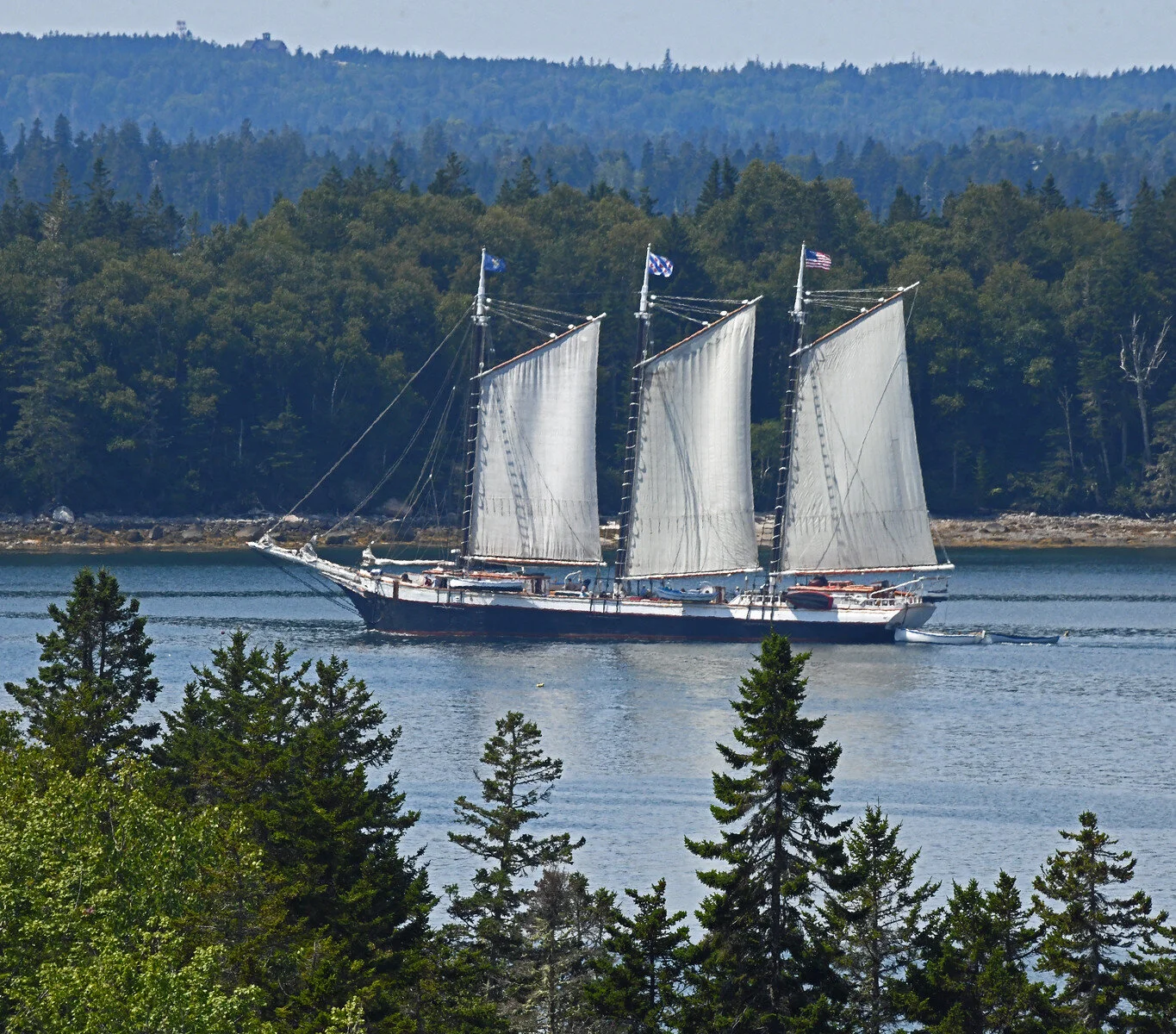Here you see the 170-foot Schooner Victory Chimes (launched in 1900) leaving Great Cove in the sunny morning of August 4:
Here’s the 91-foot Schooner Tree of Life (launched in 1991) entering the Cove in the hazy-foggy afternoon of August 7:
Changing weather is the norm here on the coast. As this is written, it’s so foggy that we can’t see our North Field, no less the Cove and what’s in it. (Brooklin, Maine)














































































































